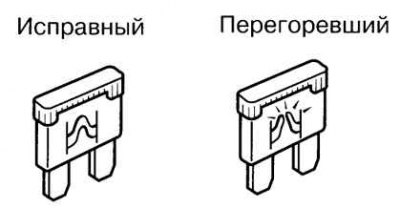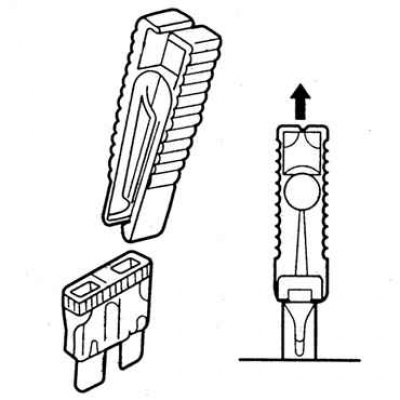Each of the fuses protects its own circuit, its belonging to a particular circuit is indicated on the cover of the fuse box.

Pic. 7.2. Example of good and bad fuses
The fuse box contains blade-type fuses, the color of which corresponds to the fuse protection current. In the event of failure of any element of electrical equipment, first of all, check the condition of the fuse. The health of the fuse is determined by the presence of a wire conductor connecting the contacts of the fuse (pic. 7.2).

Pic. 7.3. Special tweezers for extracting fuses
To replace a failed fuse, first turn off the corresponding electrical circuit, remove the fuse from the socket with tweezers (pic. 7.3).
If a newly installed fuse fails instantly when energized, check the circuit being protected. If the fuse protects several circuits, then they must be connected in turn in order to determine the faulty circuit by blowing the fuse.
The heater and air conditioner consume a lot of current, so the fuse box has a switch to protect their circuits. If the circuit is opened by the switch, turn off the heater and air conditioner before pressing the switch's reset button.
